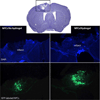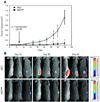Hyaluronic acid hydrogels for biomedical applications
- PMID: 21394792
- PMCID: PMC3730855
- DOI: 10.1002/adma.201003963
Hyaluronic acid hydrogels for biomedical applications
Abstract
Hyaluronic acid (HA), an immunoneutral polysaccharide that is ubiquitous in the human body, is crucial for many cellular and tissue functions and has been in clinical use for over thirty years. When chemically modified, HA can be transformed into many physical forms-viscoelastic solutions, soft or stiff hydrogels, electrospun fibers, non-woven meshes, macroporous and fibrillar sponges, flexible sheets, and nanoparticulate fluids-for use in a range of preclinical and clinical settings. Many of these forms are derived from the chemical crosslinking of pendant reactive groups by addition/condensation chemistry or by radical polymerization. Clinical products for cell therapy and regenerative medicine require crosslinking chemistry that is compatible with the encapsulation of cells and injection into tissues. Moreover, an injectable clinical biomaterial must meet marketing, regulatory, and financial constraints to provide affordable products that can be approved, deployed to the clinic, and used by physicians. Many HA-derived hydrogels meet these criteria, and can deliver cells and therapeutic agents for tissue repair and regeneration. This progress report covers both basic concepts and recent advances in the development of HA-based hydrogels for biomedical applications.
Copyright © 2011 WILEY-VCH Verlag GmbH & Co. KGaA, Weinheim.
Figures










References
-
- Fraser JR, Laurent TC, Laurent UB. J Intern Med. 1997;242:27. - PubMed
-
- Toole BP. Semin Cell Dev Biol. 2001;12:79. - PubMed
-
- Toole BP. Nat Rev Cancer. 2004;4:528. - PubMed
-
- Laurent TC, Fraser JR. Ciba Found Symp. 1986;124:9. - PubMed
-
- Kuo JW. Practical aspects of hyaluronan based medical products. Boca Raton: CRC/Taylor & Francis; 2006.
Publication types
MeSH terms
Substances
Grants and funding
LinkOut - more resources
Full Text Sources
Other Literature Sources

